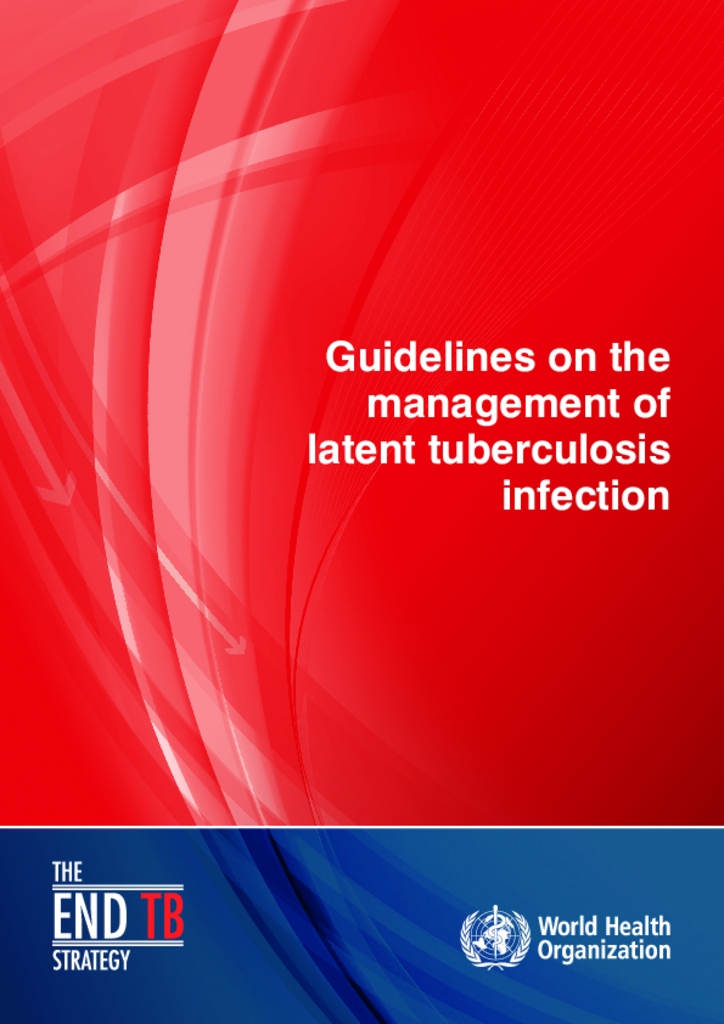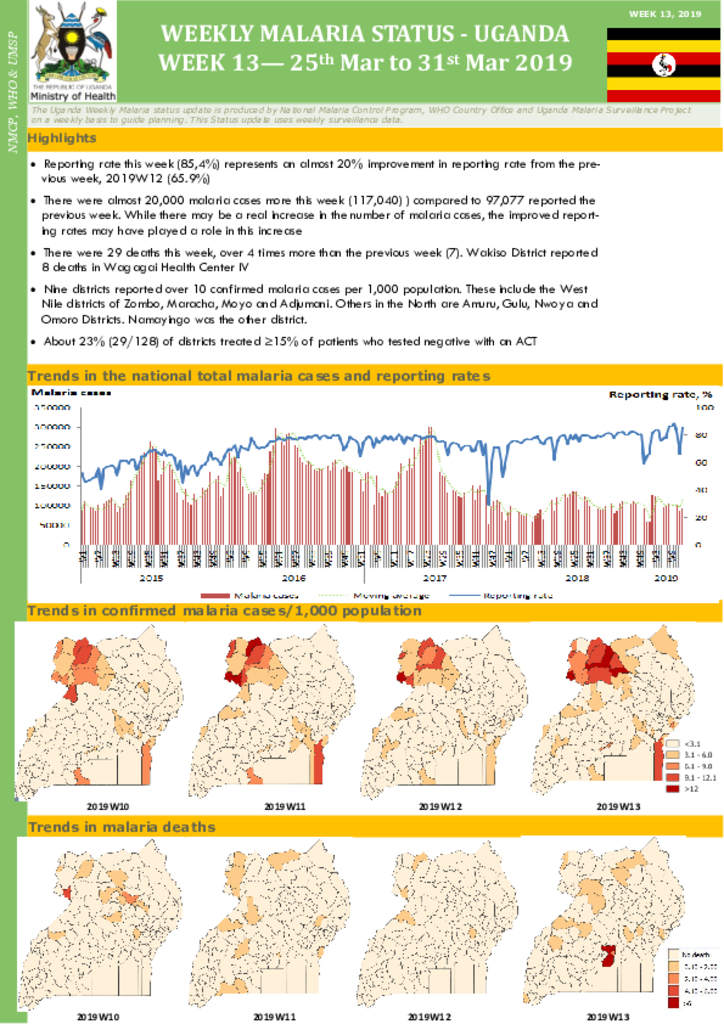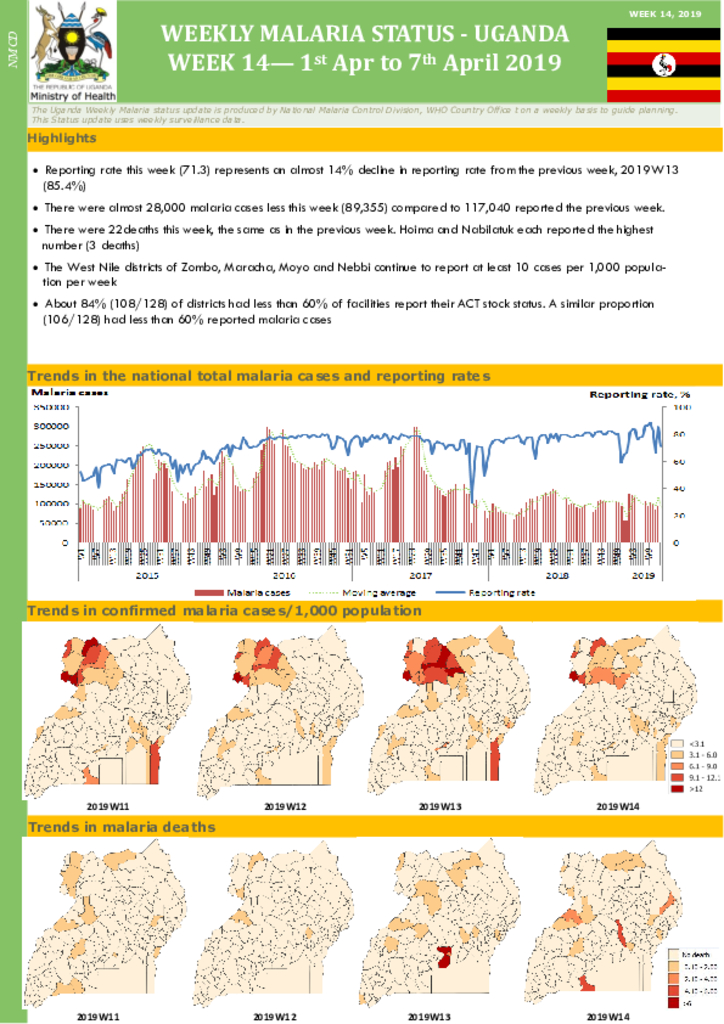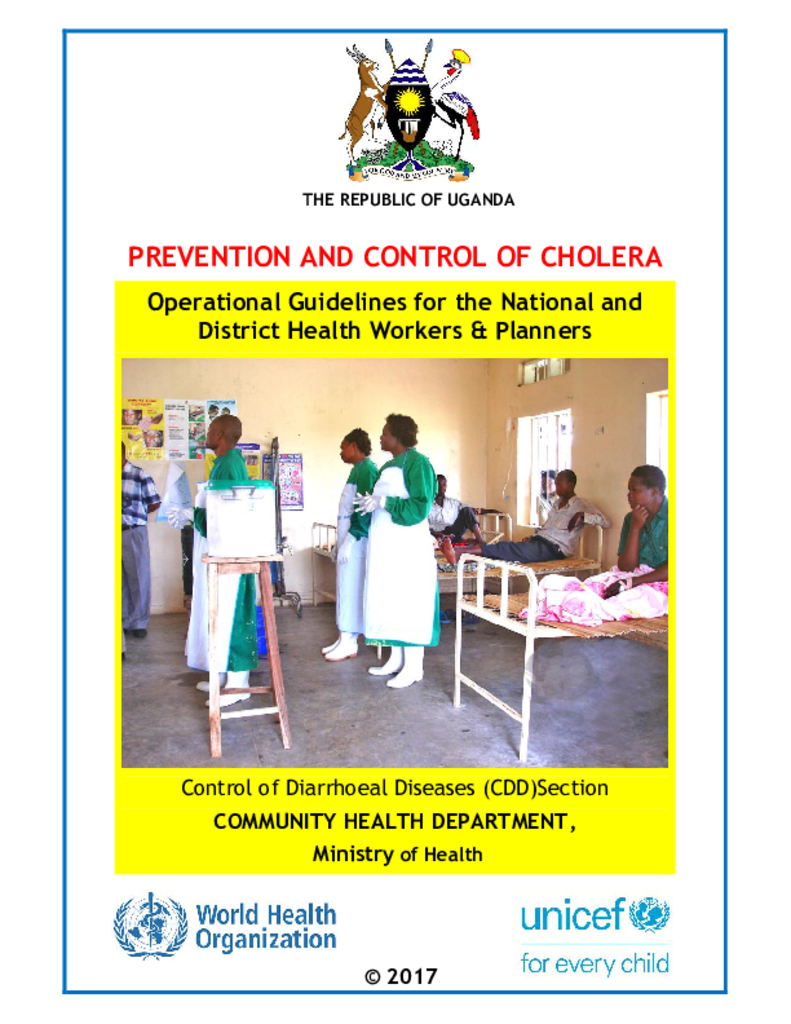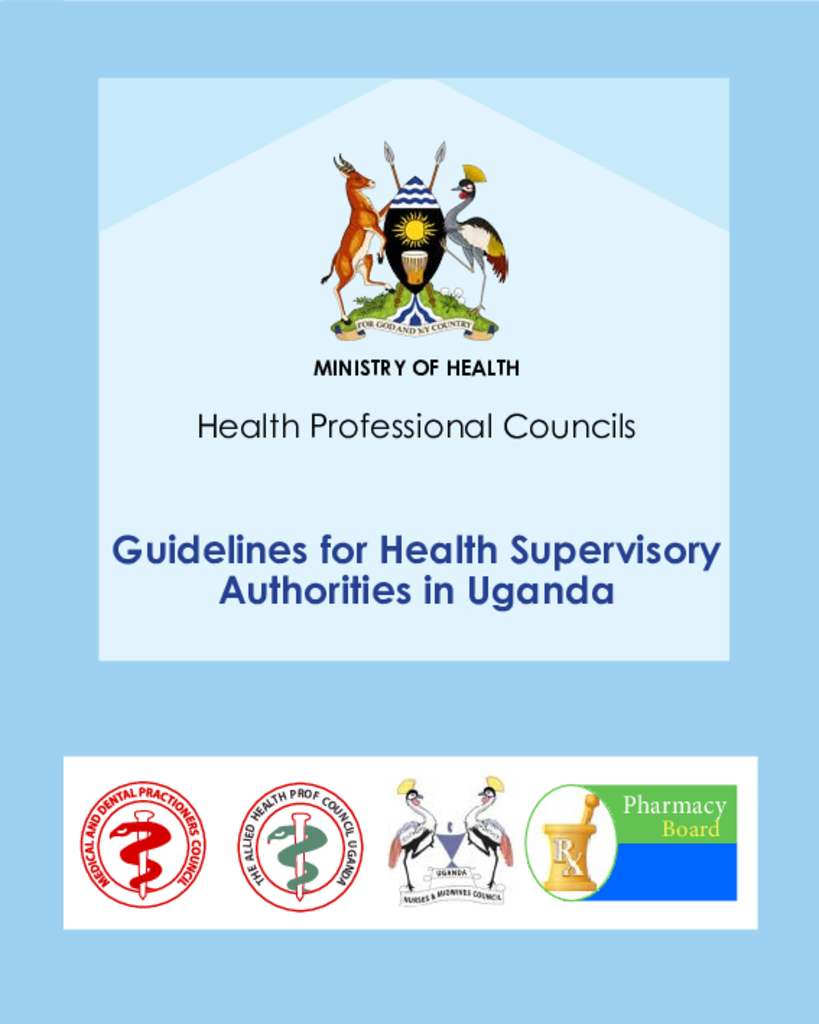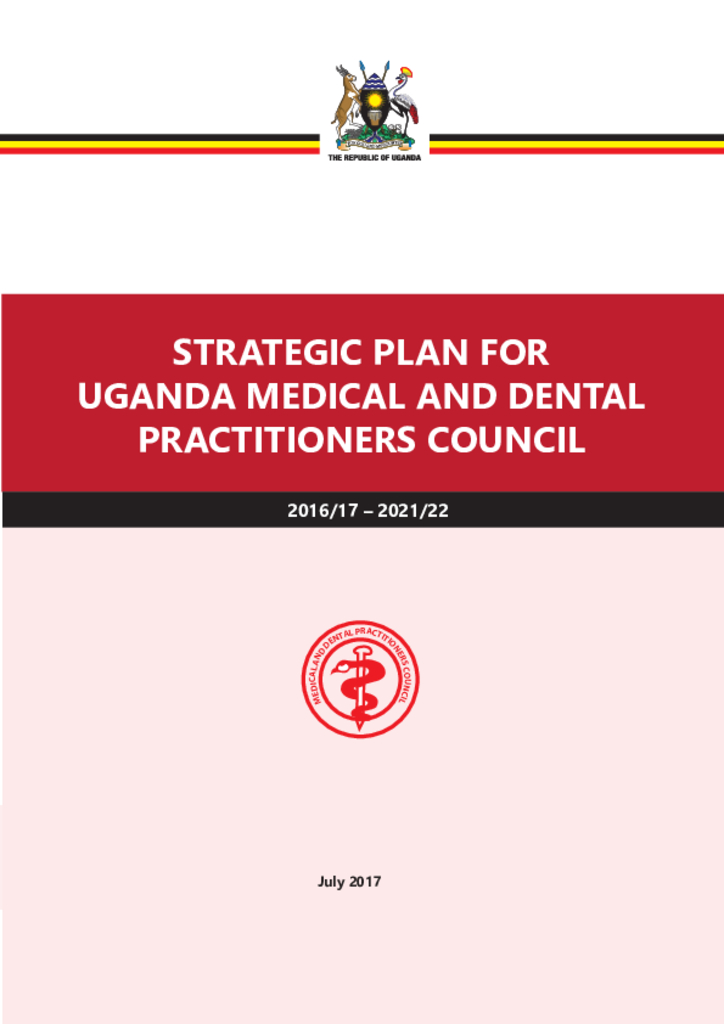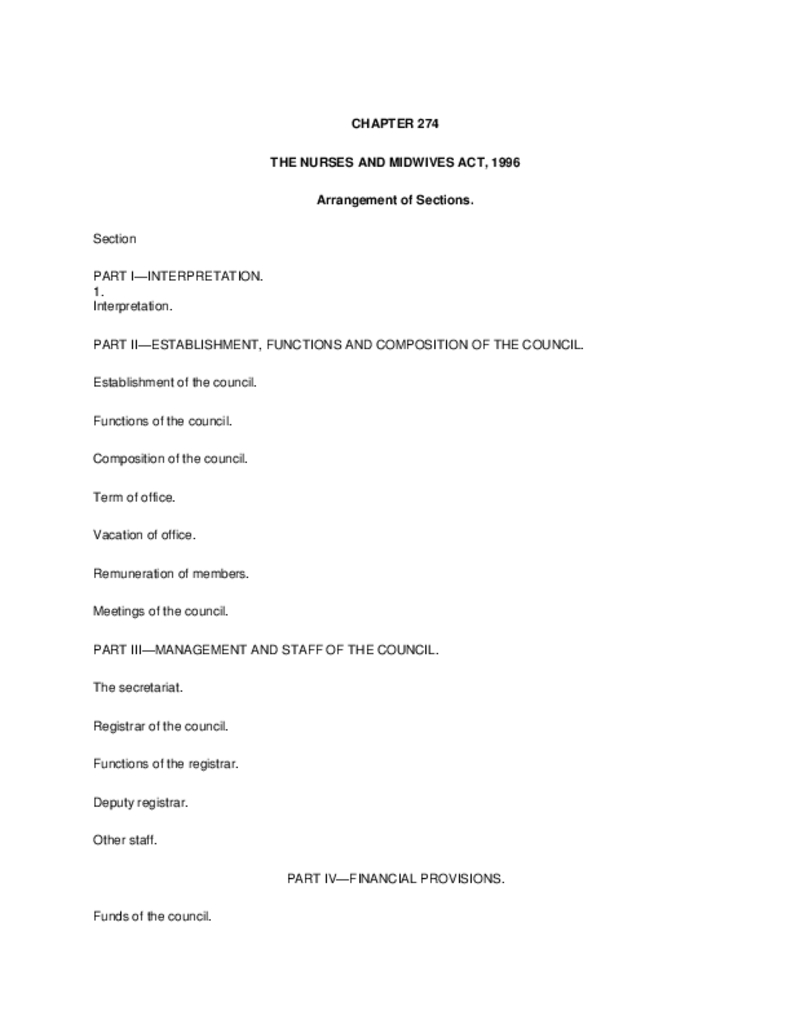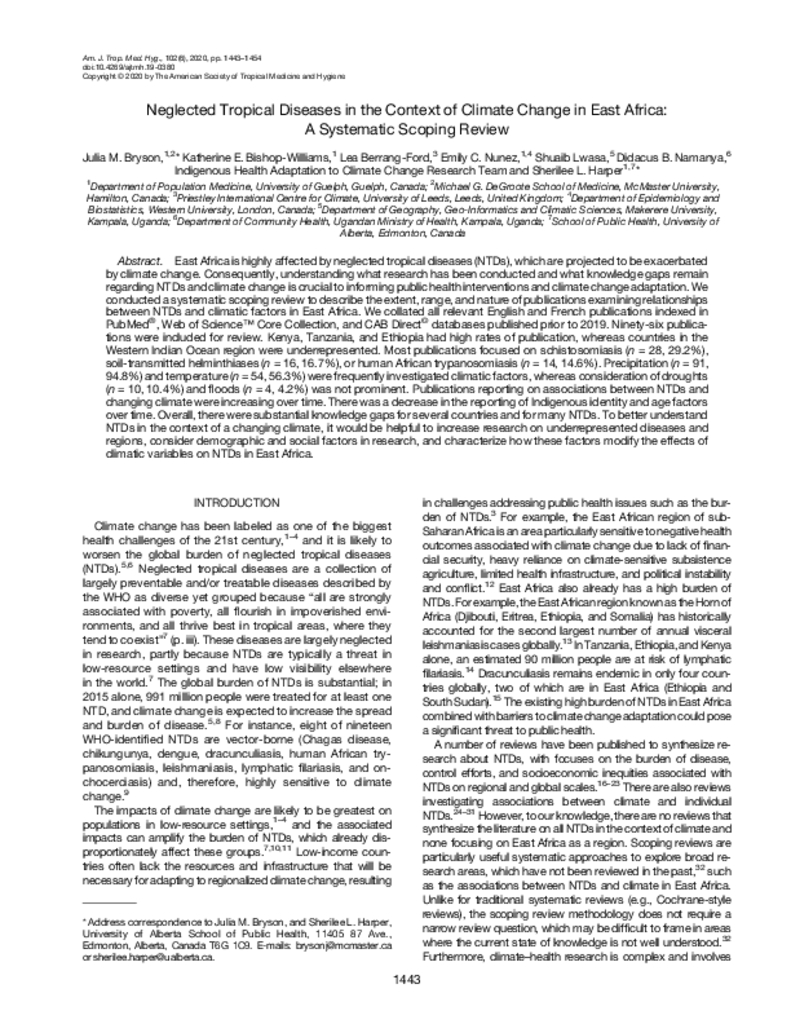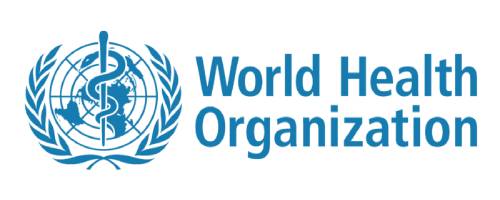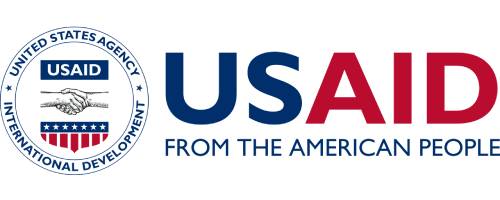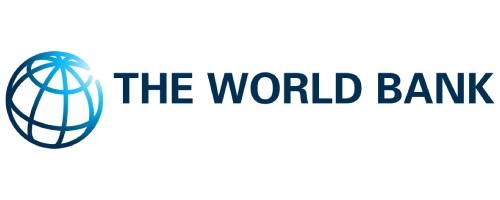These Guidelines on the management of latent tuberculosis infection were developed in accordance to the requirements and recommended process of the WHO Guideline Review Committee, and provide public health approach guidance on evidence-based practices for testing, treating and managing LTBI in infected individuals with the highest likelihood of progression to active disease.
The guidelines are also intended to provide the basis and rationale for the development of national guidelines. The guidelines are primarily targeted at high-income or upper middle-income countries with an estimated TB incidence rate of less than 100 per 100 000 population. Resource-limited and other middle-income countries that do not belong to the above category should implement the existing WHO guidelines on people living with HIV and child contacts below 5 years of age.
Reporting rate this week (85,4%) represents an almost 20% improvement in reporting rate from the pre-vious week, 2019W12 (65.9%)
There were almost 20,000 malaria cases more this week (117,040) ) compared to 97,077 reported the previous week. While there may be a real increase in the number of malaria cases, the improved report-ing rates may have played a role in this increase
There were 29 deaths this week, over 4 times more than the previous week (7). Wakiso District reported 8 deaths in Wagagai Health Center IV. Nine districts reported over 10 confirmed malaria cases per 1,000 population. These include the West Nile districts of Zombo, Maracha, Moyo and Adjumani. Others in the North are Amuru, Gulu, Nwoya and Omoro Districts. Namayingo was the other district. About 23% (29/128) of districts treated ≥15% of patients who tested negative with an ACT
Reporting rate this week (71.3) represents an almost 14% decline in reporting rate from the previous week, 2019W13 (85.4%)
There were almost 28,000 malaria cases less this week (89,355) compared to 117,040 reported the previous week. There were 22deaths this week, the same as in the previous week. Hoima and Nabilatuk each reported the highest number (3 deaths)The West Nile districts of Zombo, Maracha, Moyo and Nebbi continue to report at least 10 cases per 1,000 popula-tion per week About 84% (108/128) of districts had less than 60% of facilities report their ACT stock status. A similar proportion (106/128) had less than 60% reported malaria cases
The overall goal of these guidelines is to contribute to the reduction of morbidity and mortality due to cholera and other diarrhoeal diseases which is in line with the Health Sector Development Plan goal (HSDP 2015/16-2019/2020); “To accelerate movement towards Universal Health Coverage with essential health and related services needed for the promotion of a healthy and productive life”
Uganda is faced with frequent outbreaks of emerging diseases and high burden of other endemic conditions, including cholera, all of which require dedicated resources for their prevention and control.
This publication is basically about how the outbreak of acute diarrhoea can be handled.
Competencies are specific and observable knowledge, skills, and behaviors that are associated with the effective functioning of the job/task. This Dictionary focuses on behavioral and technical competencies which apply to all Public Officers regardless of the profession.
Competence profiles will be developed to reflect competencies that are specific to a particular job/profession. Behavioral competencies describe traits and attitudes, while technical competencies describe skills and knowledge required to do a specific job.
The regulation of health practice and professionals is the mandate of the health professional councils (HPC) and Pharmacy Board (PB). However, the Councils face a number of challenges mainly understaffing and enforcement constraints to effectively regulate the health practice and professionals. The shortage gives rise to un-regulated, ill- or un-trained non-health professionals in both public and private practice. Additionally, the councils and pharmacy board are also constrained by financial and material resources
This Strategic Plan sets out UMDPC’s strategic direction for the next five years (2016/17-2021/22). It gives the priorities of the Council and how these will be achieved, as well as provides the basis for efficient and effective utilisation of the human, physical and financial resources.
The Strategic Plan is informed by the contextual challenges faced by UMDPC; relevant national policies and strategies in the health sector in Uganda. The process was participatory and took cognizance of the different and wide input from the relevant stakeholders.
In this Act, unless the context otherwise requires— “certificate” means a certificate issued under section 18; “chairperson” means the chairperson of the council appointed under section 4; “council” means the Nurses and Midwives Council established under section 2; “diploma” means a diploma issued under section 18; “enrolled” means having the name entered in the roll under section 22; “former council” means the council established under the Nurses, Midwives and Nursing Assistants Act, 1964; “Gazette” means the Uganda Gazette and includes the Gazette Extraordinary
Nine years have elapsed since the World Health Organization (WHO) published its first road map for neglected tropical diseases, which set targets for 2020. With exemplary country leadership and the continued support of industry and partners, we have been able to push back many of these diseases, bringing some close to elimination and eradication. However, despite substantial progress in reducing the overall burden, many of the targets set for 2020 were not achieved.
East Africa is highly affected by neglected tropical diseases (NTDs), which are projected to be exacerbated by climate change. Consequently, understanding what research has been conducted and what knowledge gaps remain regarding NTDs and climate change is crucial to informing public health interventions and climate change adaptation
